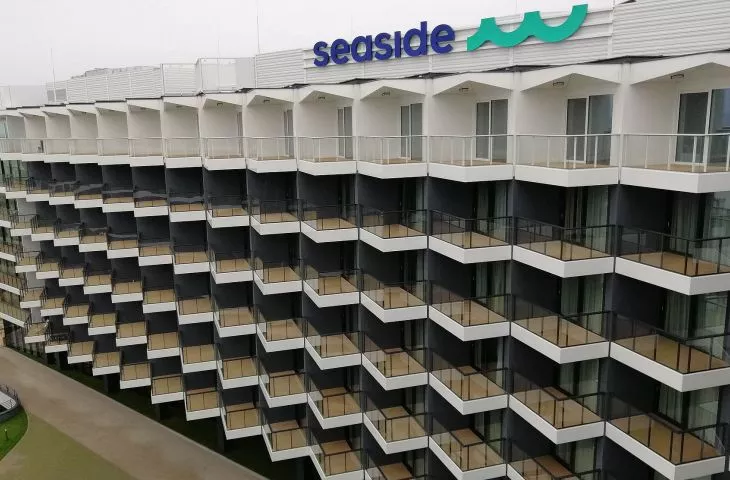Durable and functional wood composite decking for any surface
The installation of a domestic terrace or balconies in a hotel requires the use of reliable and durable materials. In this lead the way with wood composite paving, which provides a high aesthetic finish, as well as comfort of use. See the modern substrates for the terrace offered by EKOTEAK Sp. z o.o. and choose the best solution for your investment.
EkoTeak composite decking board
© EKOTEAK
Three types of substrate for a terrace
The substrate for a terrace must be solid and stable. Various techniques can be used to make it including:
- concrete slab with a slope
- ceiling
- ground
Depending on what the surface will be, the investor can opt for system solutions provided by the Polish manufacturer EKOTEAK Sp. z o.o., owner of the EkoTeak® brand. The company designs terraces from materials that match the substrate. In this way, it manages to achieve a perfectly finished property, with an outdoor activity zone.
EKOTEAK terrace on a concrete slab with a slope.
© EKOTEAK
What kind of surface for a concrete slab with a slope?
In a situation where the substrate is a concrete slab (reinforced) with a minimum 2 percent slope, a water repellent insulation should be made. For this purpose, heat-sealable membrane or liquid waterproofing is used. Terrace boards on composite joists can be laid on such a prepared substrate. Depending on how they are laid, they manage to achieve a height of 51 to 61 mm. The structure may require support, so it works best where the system does not need to be raised above the concrete layer.
For leveling, wedges and tiles are used, while cross joists,tile leveling or wedge leveling are alsoused to achieve heights greater than 101 mm. Another option is to create bases from concrete blocks or other prefabricated elements and place leveling elements on them. Another option is to choose terrace supports that are adjustable and reach for aluminum jo ists. With solid reinforced materials and supports, you can get a terrace system as high as 540 mm.
EKOTEAK Terrace on the STROPOFING
© EKOTEAK
Ceilings - what are they and which joists to choose?
Soffits come in two versions - the classic soffit and the inverted soffit. For laying terraces, it is worth using aluminum joists with adjustable supports. In addition, in the inverted version, the soffit may require an additional layer of gravel or earth, which performs pressure and filtering functions.
Such a terrace is stable, well established and no longer requires additional pressure. In the absence of a pressure layer, it is advisable to reach for systems on aluminum joists in a cross pattern with adjustable supports for leveling. This will ensure the stability of the entire structure.
EKOTEAK terrace on the GROUND
© EKOTEAK
Terrace on the ground - how to cope with the demanding ground?
You can also set the terrace directly on the ground, but this substrate is quite demanding and requires proper preparation. Point foundations are needed. EkoTeak Ltd. has an innovative solution for making point foundations for terraces - these are specially made plastic screws, screwed into the ground, which additionally have the ability to adjust the height and create slopes. To do this, you need to make the appropriate boreholes below the frost zone, and then screw in the foundation. The place of installation of the element should be covered on top with an agro-textile, which will protect against weeds. Then you can proceed to the final stage of the investment, which is the laying of the wood composite terrace on cross-laid aluminum joists. The spacing of the joists in such a grid arrangement can be 100×140 cm.
A well leveled ground and a slight slope of the terrace pavement (maximum 1% from the building) will make the new terrace look beautiful and enjoyable to use.
Terrace with wood composite paving from EKOTEAK
© EKOTEAK
For more information, visit the company's EKOTEAK Sp. z o.o. page on the A&B portal.




































